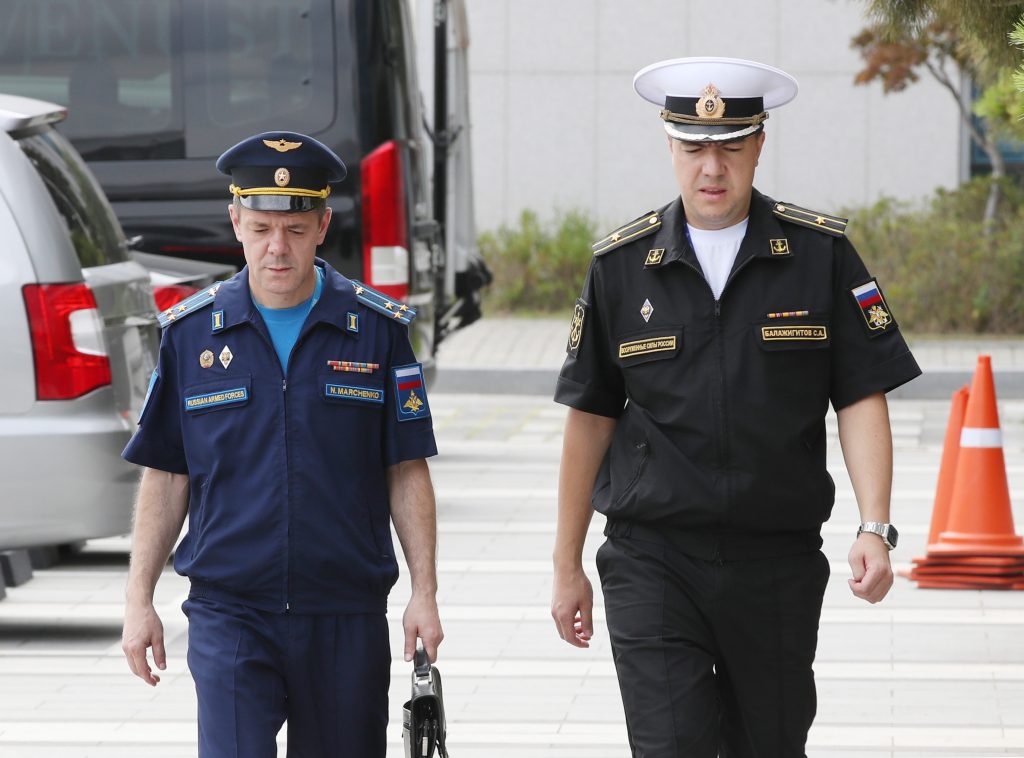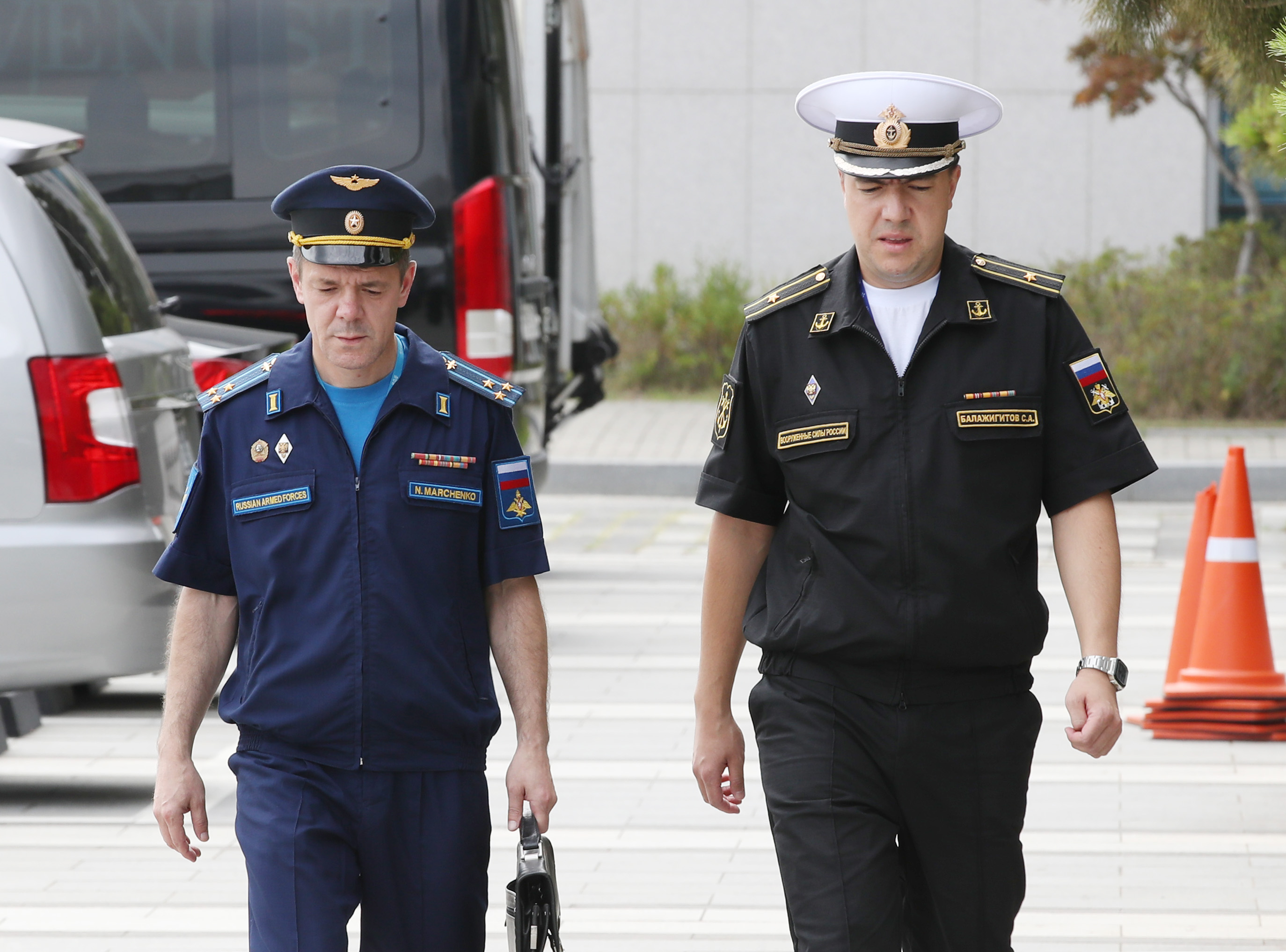SEOUL, July 23 (NNN-YONHAP) — A Russian warplane violated South Korea’s airspace above the East Sea twice Tuesday, prompting the Air Force to fire warning shots in the first such airspace violation by a foreign airplane ever, military officers here said.
The Russian A-50 early warning and control aircraft trespassed in the territorial sky above the East Sea near South Korea’s easternmost islets of Dokdo earlier in the day for two brief periods in breach of international treaties, according to officers from the Joint Chiefs of Staff (JCS).
The incident came right after two Tu-95 Russian bombers and two Chinese H-6 aircraft entered South Korea’s air defense identification zone (KADIZ) without prior notice earlier in the day, the officers said, adding that the two Russian bombers again trespassed on the air defense zone in the afternoon.

This marked the first time that a foreign military plane has violated Korea’s territorial sky and South Korea fired warning shots in response. It was also the first time that Russian and Chinese aircraft entered KADIZ simultaneously.
South Korea’s foreign ministry summoned Maxim Volkov, the No. 2 diplomat at the Russian Embassy here, to lodge a formal complaint. It also called in Chinese Ambassador to Seoul Qiu Guohong to file a protest.
“(The ministry) called in the deputy chief of the Russian Embassy to lodge a stern protest and call for the prevention of a recurrence,” Deputy Foreign Minister for Political Affairs Yoon Soon-gu said.
The Russian early warning plane first entered KADIZ at 09:01 and flew further into the airspace after 8 minutes.
“The Air Force instantly deployed multiple jets, including F-15Ks and F-16Ks, and sent warning messages to it in accordance with operation manuals. But the plane did not respond, so one of our aircraft fired some 10 rounds of flares and 80 warning shots,” a JCS officer said.
The Russian aircraft then left the airspace after three minutes, and finally flew out of KADIZ at around 9:15 a.m, he added.
At around 9:33 a.m., however, it again encroached upon South Korean airspace. Following stronger military actions involving around 280 rounds of warning shots, the aircraft left the airspace four minutes later. It finally flew out of the air defense zone at 9:56 a.m.
Before the airspace infringement took place, two Russian and two Chinese bombers violated KADIZ earlier in the day, according to the officers.
At around 6:44 a.m., two Chinese H-6s flew into KADIZ from northwest of South Korea’s Ieodo, a submerged rock south of the southern island of Jeju, and stayed for about 30 minutes.
At 7:49 a.m., they re-entered the air defense zone from the south of the eastern island of Ulleung, and stayed there about 30 minutes before leaving the zone heading northward.
The Chinese aircraft then joined two Russian TU-50s and flew southward together over the East Sea. The four entered KADIZ at around 8:40 a.m. for a 25-minute flight, according to the JCS officer.
Later in the day, at around 13:11 p.m., the two Russian bombers again entered KADIZ and left the zone 27 minutes, he added.
Taken all together, the Russian aircraft stayed in KADIZ for about 93 minutes, and the Chinese warplanes stayed there for 85 minutes.
“More analysis is needed for their joint flight, which is quite unusual, as well as their intentions and other details,” the officer said, adding that military authorities have not received any responses from the countries regarding the incidents.
A military official said that it appears that the Russian and Chinese aircraft have conducted joint military drills, which he said is unusual.
The purpose of their joint flight and intentions behind the series of breaches were not immediately clear.
Some speculate that Tuesday’s air drills might be intended as a show of force against joint drills between the United States and South Korea scheduled for next month.
The latest development coincided with U.S. National Security Adviser John Bolton’s arrival in Seoul for discussions with high-ranking officials here on issues expected to include the North’s denuclearization
An air defense identification zone is an area of the skies declared by a state for the early identification and location of foreign planes approaching its territorial airspace to prevent infiltration by foreign planes and accidental clashes. It is not defined in any international law or treaty.
KADIZ violations by foreign aircraft have occurred intermittently. So far this year, Chineses military aircraft have entered the KADIZ 25 times and Russian airplanes 13 times, according to the JCS.
–NNN-YONHAP






